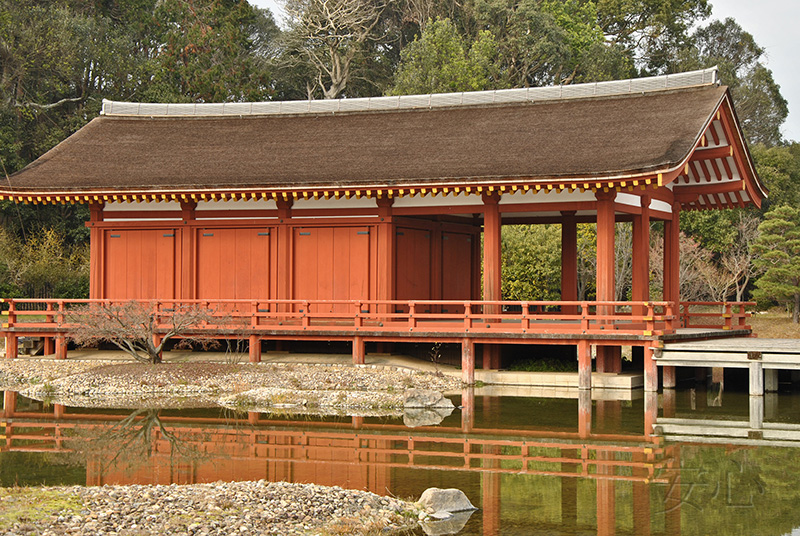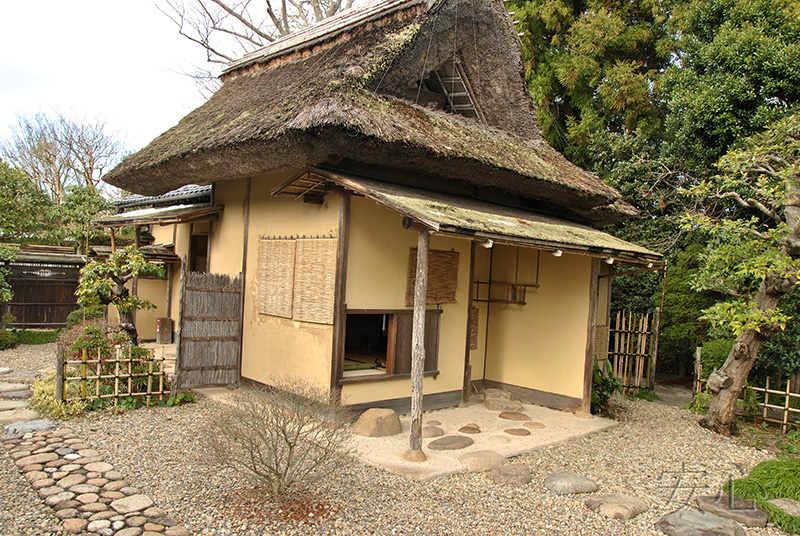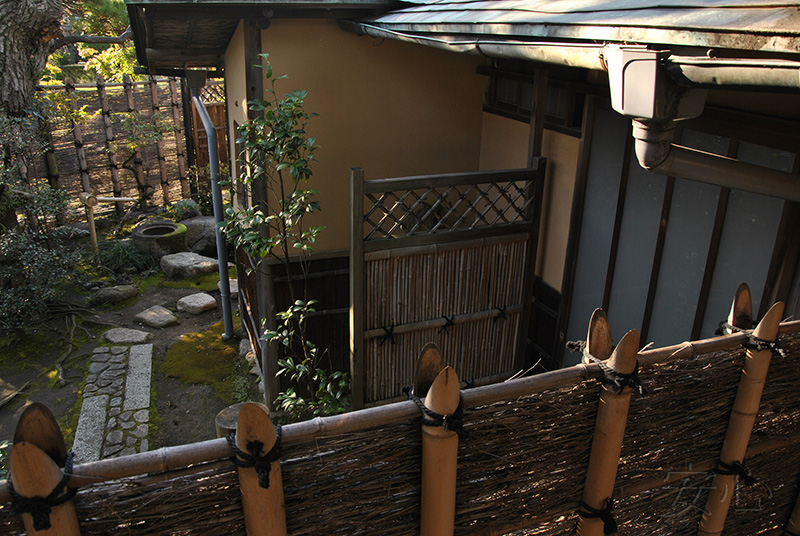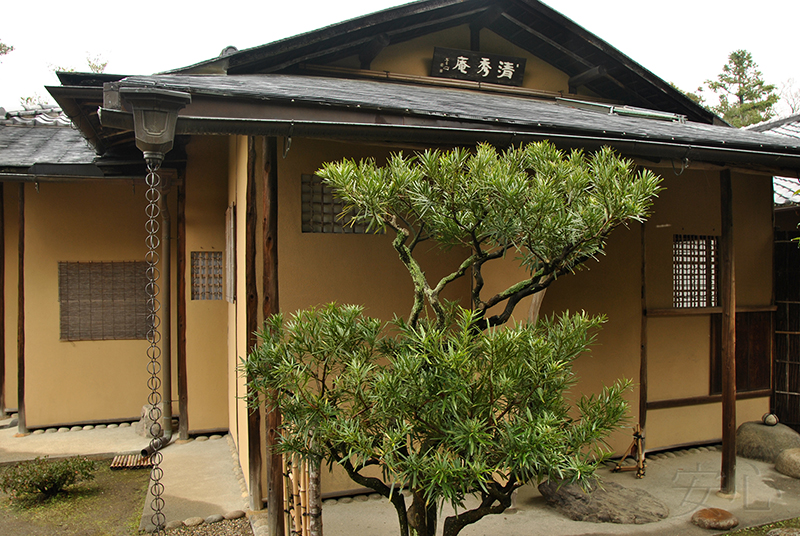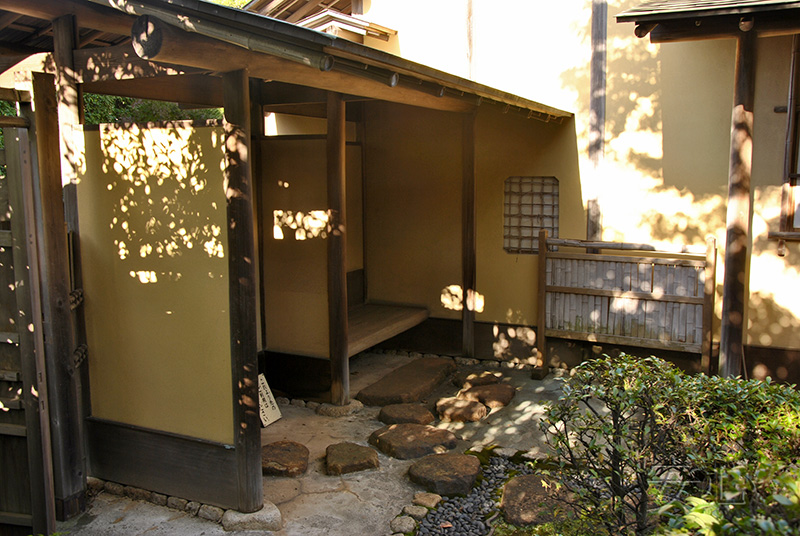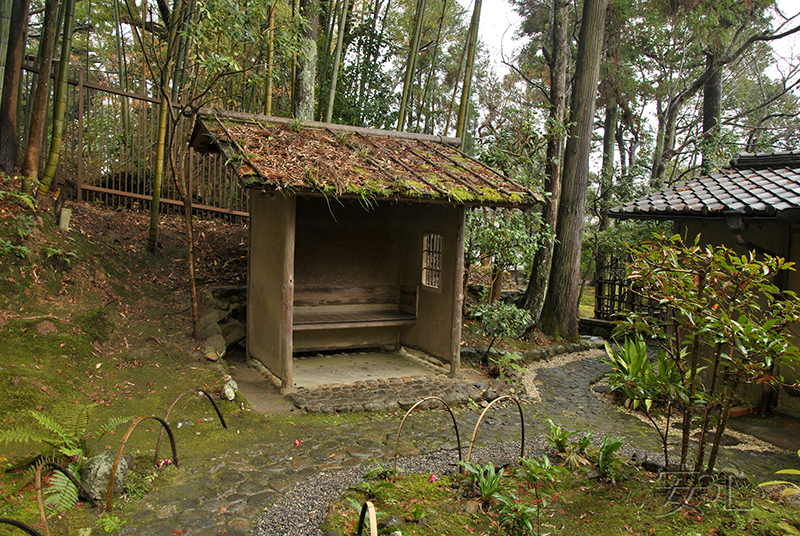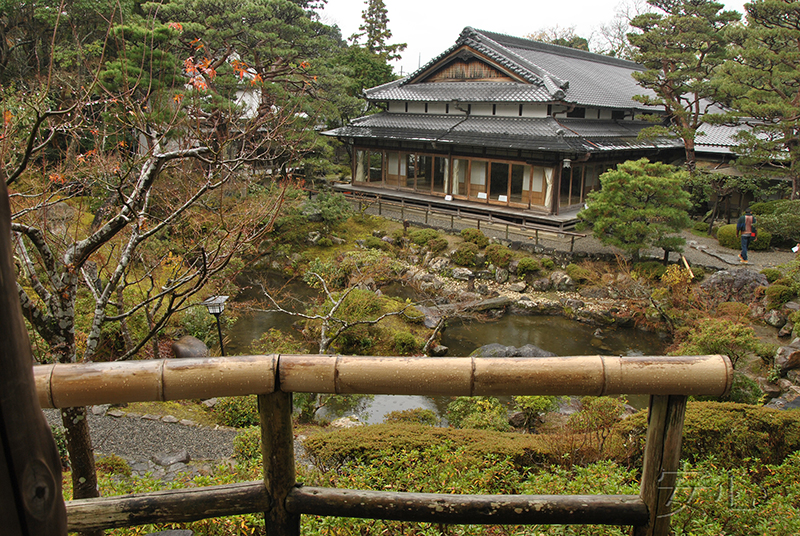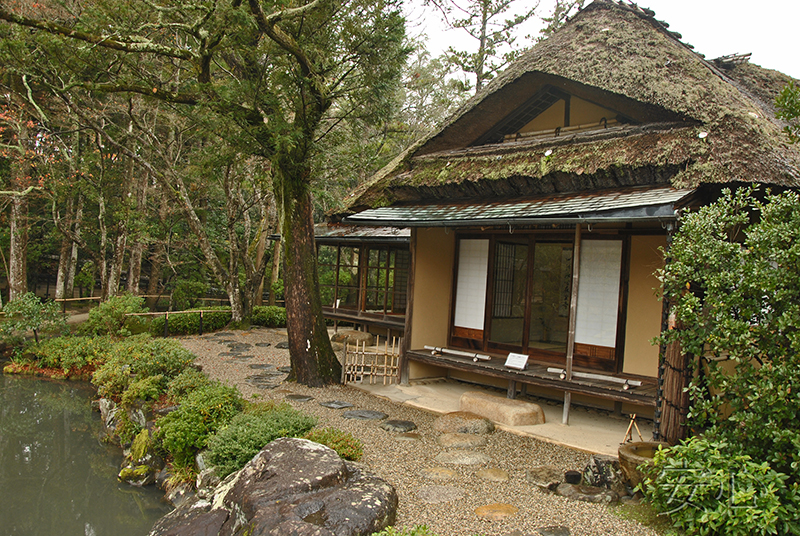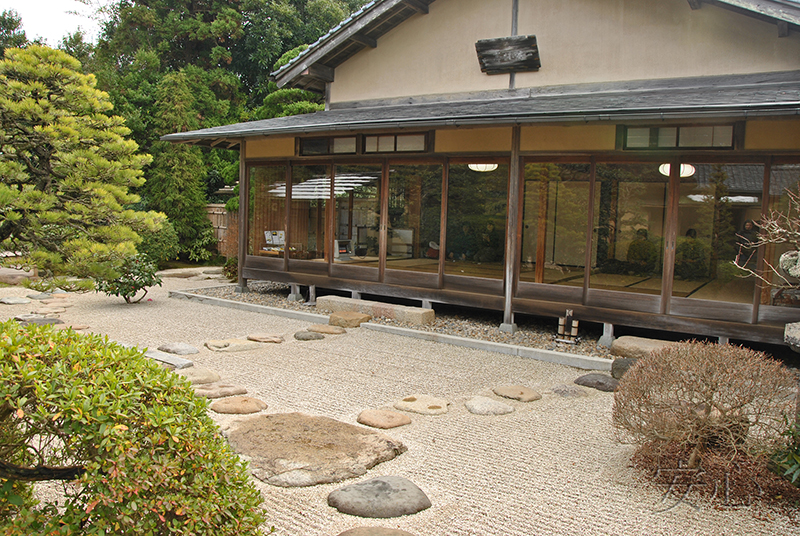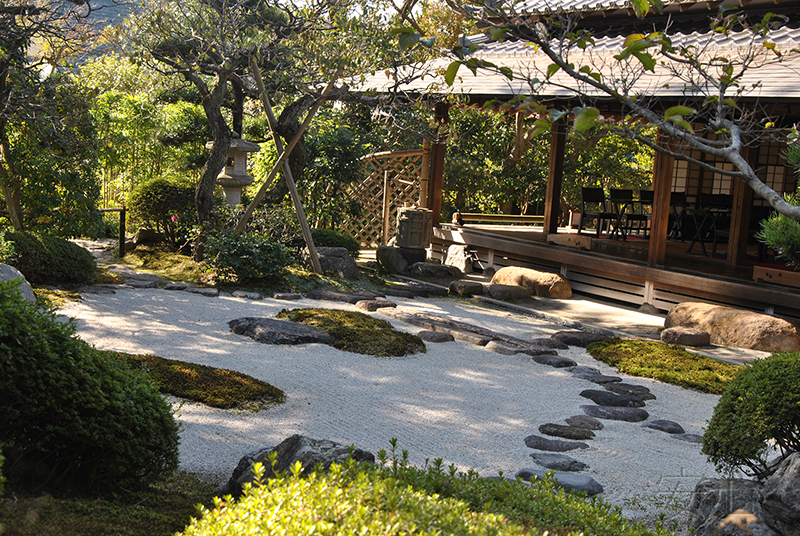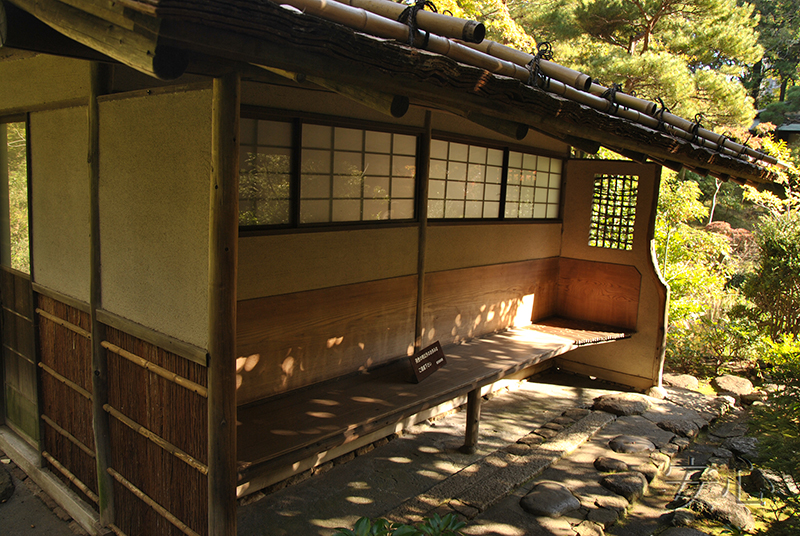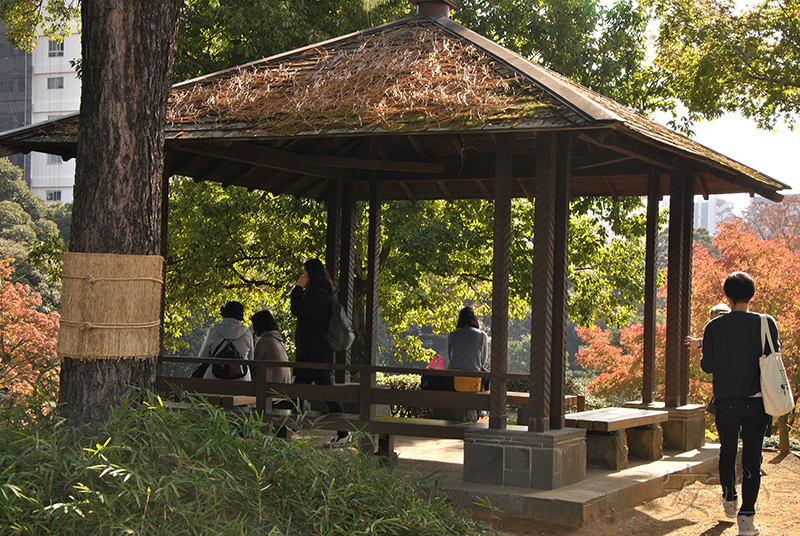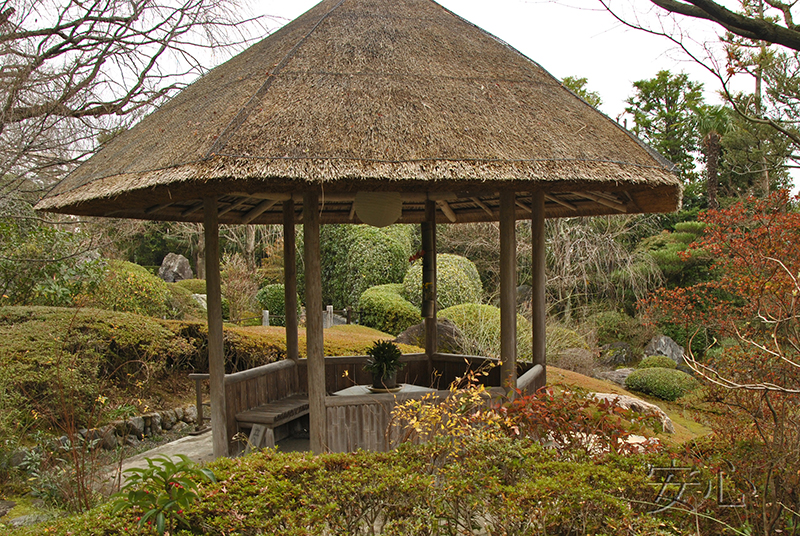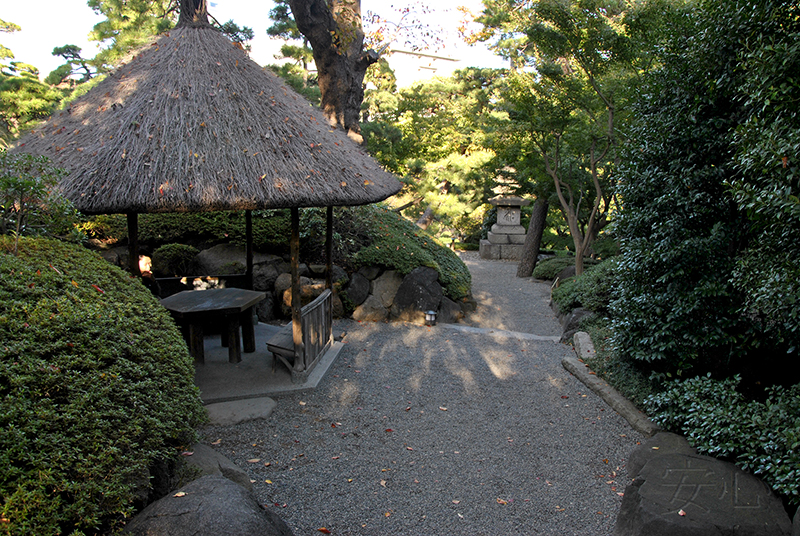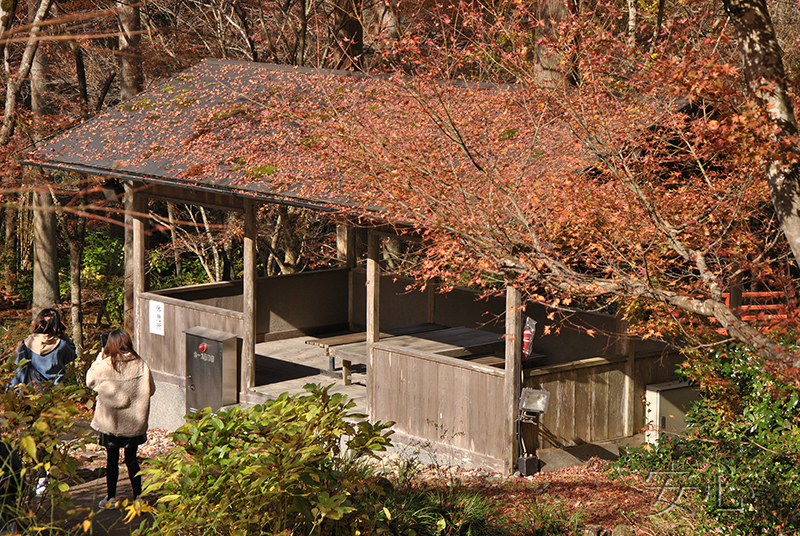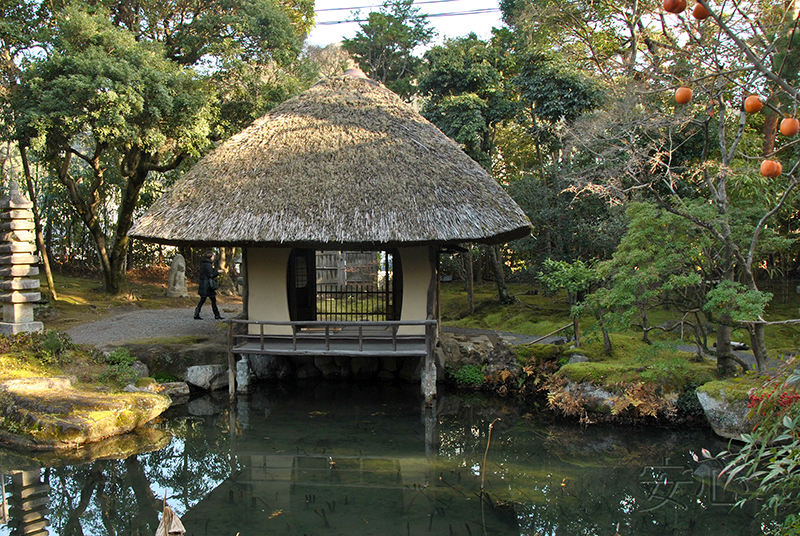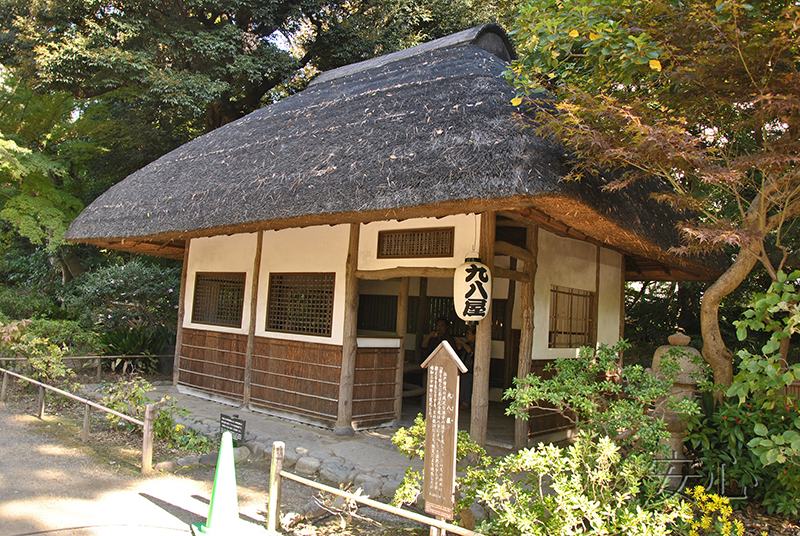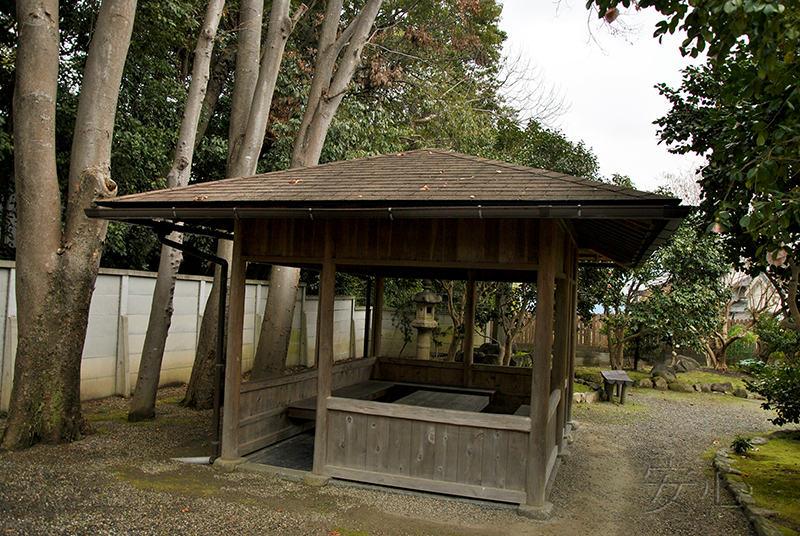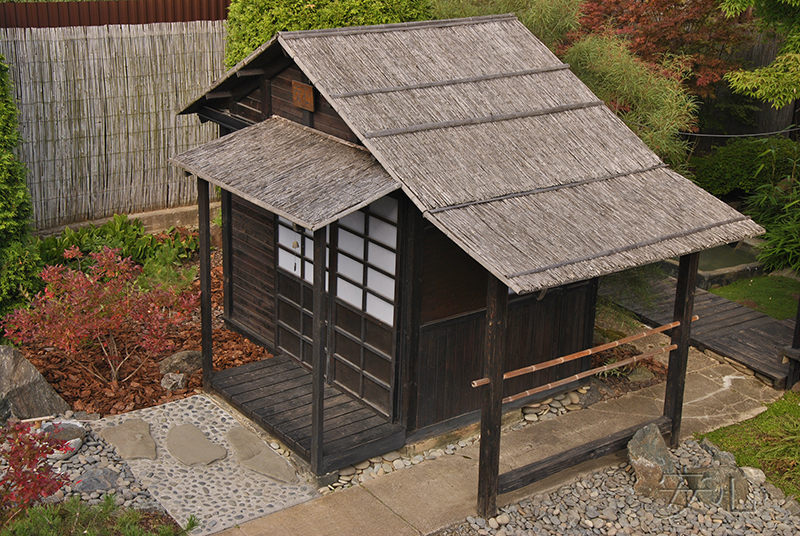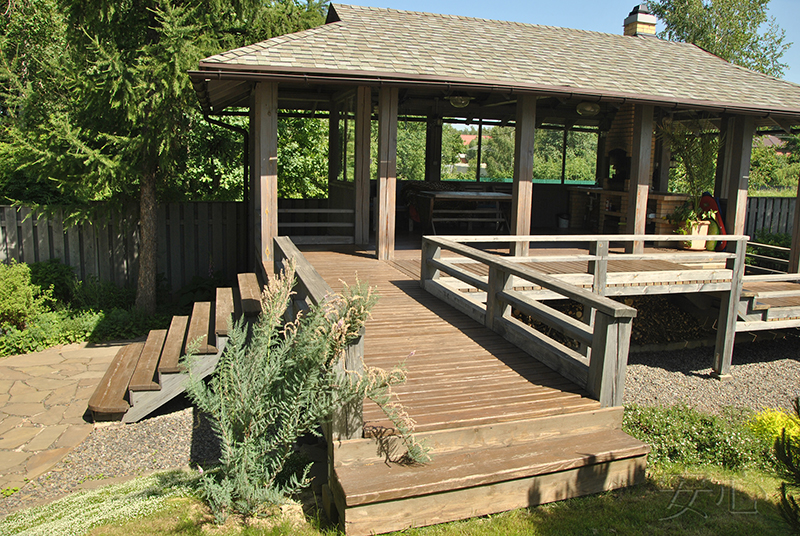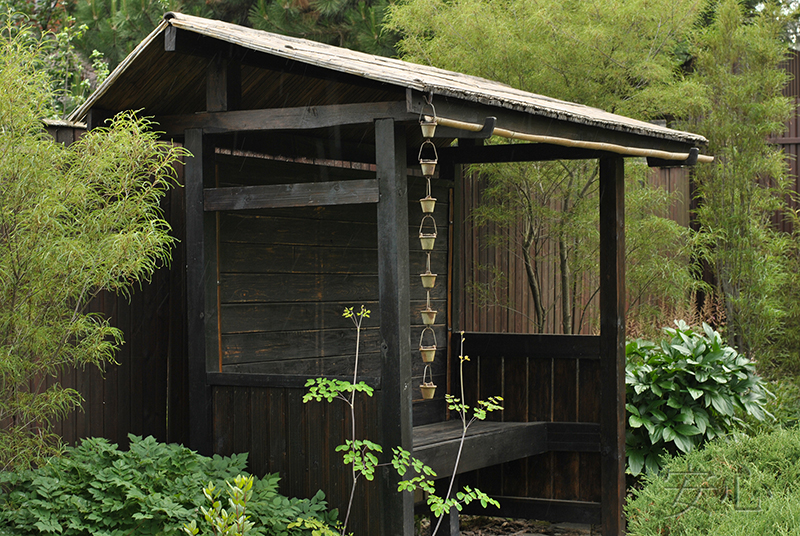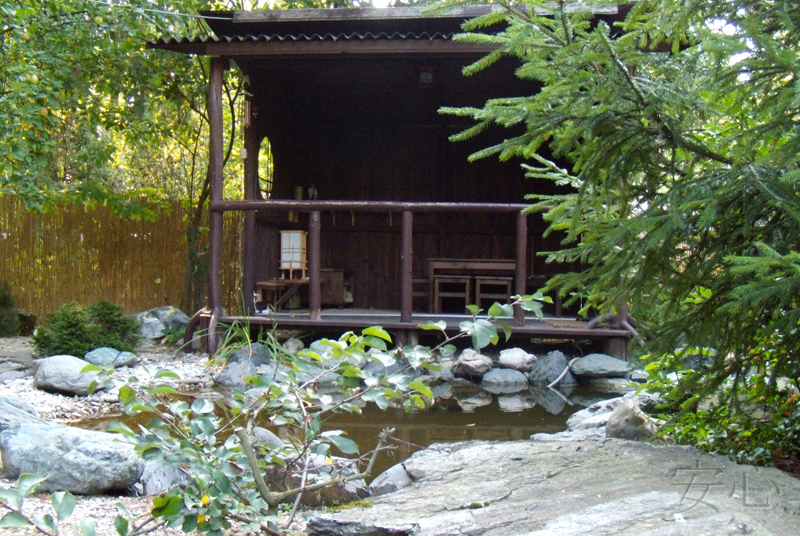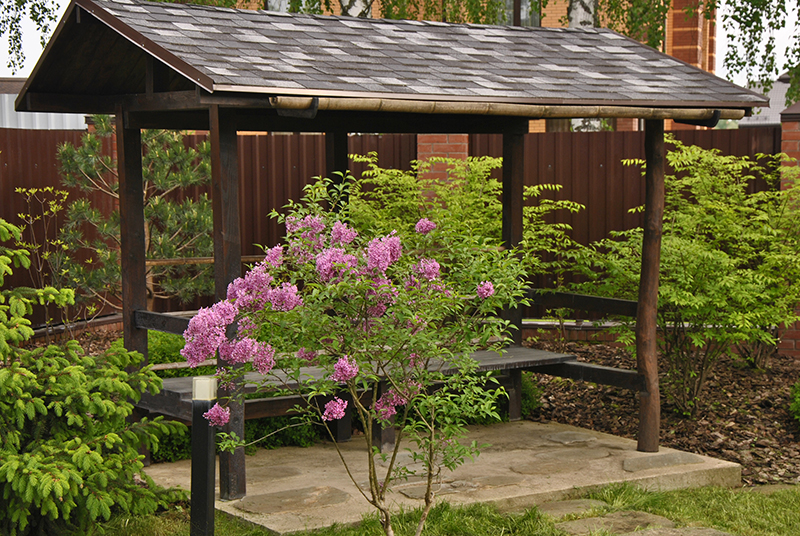
A pavilions in Japanese gardens
A pavilion is an important part of a Japanese garden. It’s connected with the history of the development of the Japanese garden.
Initially these gardens were planted near emperor palaces or the aristocracy houses. At that time Japan was under the influence of China. Japanese way of life and culture as well as gardening were greatly influenced by that country. Different ceremonies and rituals extremely important at court were held in the pavilions built in a Chinese style. However, the Japanese kept their originality so pavilions built in a more ascetic Japanese style could be seen side by side with the Chinese pavilions. Ancient garden Toin in Nara is a typical example. There used to be a Chinese pavilion with a foundation in the north-eastern part, whereas a Japanese pavilion on the western side of the pond was built on poles.
Japanese pavilion, Toin Teien garden Heijo Palace, Nara
Throughout most of its history, Japanese gardens have been closely associated with tea culture. This drink was appreciated for its healing properties in ancient times. The monks used it to maintain vigor during meditation. Buddhist priests brought the custom of drinking tea from China to Japan during the Nara period, and it lasted until the end of the Heian period. Then, during the Kamakura period, interest in tea intensified again. Moreover, now tea drinking was presented as a necessary care for the body. But gradually they were transformed into the entertainment of the nobility. Merchants and warriors competed among themselves in determining of sorts of tea brought from China. Such games were held along with bathing, drinking alcohol, etc. However, people of a higher class considered tea sacred. They made ceremonies similar in spirit to Buddhist rituals. Such tea ceremonies took place in the homes of influential samurai and priests.
In the 15th century Zen monk Murata Shuko was the first to perform the wabi ceremony. He built himself a small tea house, reminiscent of a hermit's hut, and proclaimed asceticism as one of the main principles of the tea ceremony. Murat Syuko's ideas were accepted and developed by his students and successors. Tea ceremonies changed, filling with new elements, rules, ideas. Tea houses also changed. In the early 16th century, these were small individual huts in small gardens that belonged to wealthy merchants. Then more houses began to be erected, since they were located in the spacious residences of the daimyo, who patronized the tea masters.
Tea houses, or chashitsu, resembled a simple village dwelling, and they were partly "written off" from Japanese farms. The roof is covered with thatch, the windows are small, opaque, their task is only to let in a small amount of light inside, the garden is not visible through them. The entrance to the house is through the nijiri-guchi - a small door that only allows you to crawl on all fours. Such passage served several purposes. First, after crawling through a tiny door, we perceive the tea room as much larger than it actually is. Secondly, such a ritual, as it were, equates all participants in the tea ceremony with each other.
teahouse Meimei-an, Matsue
teahouse, Suikei-en garden, Tokyo
teahouse, Isui-en garden, Nara
The development of tea activities has led to the appearance of another type of gazebo in the tea garden - soto-koshikake or machiai, a small gazebo for waiting. The participants of the tea ceremony, passing through the covered gates separating the garden from the outside world, first gather in such a gazebo, sit on benches and silently await the beginning of the ceremony. This is a very important moment in the whole tea action: guests are not so much waiting for an invitation, but rather tune in to the upcoming ritual, bring their thoughts and spirit into proper condition. Waiting in soto-koshikake also fosters a sense of unity between the participants in the ceremony.
soto-koshikake, Yamamoto-tei garden, Tokyo
soto-koshikake, Yoshiki-en garden, Nara
В 17 веке меняется как политическая, так и экономическая ситуация в Японии. Класс самураев постепенно исчезает, вместо них на первый план выходят богатые торговцы, промышленники, а также аристократы. У них уже совершенно другой образ жизни, другое мышление, другие приоритеты. Новая элита приглашает к себе многочисленных гостей, которые никак не смогут поместиться в маленькой хижине. И вот чайные дома превращаются в павильоны, с огромными раздвижными окнами, выходящими на сад, с высоким потолком, с верандами, нависающими над живописными прудами.
teahouse, Yoshiki-en garden, Nara
teahouse, Isui-en garden, Nara
teahouse Meimei-an, Matsue
Even chairs can be seen in modern tea houses. The visitors here are not sitting on the floor.
teahouse, Jomyo-ji garden, Kamakura
By the way, not only tea houses have increased, but also gazebos for waiting.
soto-koshikake, Nezo museum garden, Tokyo
Of course, for more similarity, it is better to build a pavilion or soto-koshikake in the garden. But this does not mean that simple gazebos will not fit into a Japanese garden. Often in Japanese gardens and parks, you can see the azumaya - a covered resting place. Despite the fact that most often such gazebos can be found in public gardens and parks, the origin of these structures goes back to ancient times. Azumaya has been built in gardens since the days of Heian. Moreover, if at first the gazebos were quadrangular, then structures of various shapes appeared. I suggest you to look at the options for gazebos that we met in Japan.
azumaya, Kyu-Furukawa garden, Tokyo
azumaya, Taizo-in garden, Kyoto
azumaya, Happo-en garden, Tokyo
gazebo, Sanzen-in garden, Ohara
gazebo, Hakusasonso, Kyoto
gazebo, Koishikawa Koraku-en garden, Tokyo
gazebo, Hokke-ji garden, Nara
Well, in the end, I would like to show several gazebos and tea houses built in Russia. Below are the works both in our gardens and in the gardens of our friends.
anshin©2011All rights reserved. When using the materials of the site, reference is obligatory.
Proposals for co-operation, as well as comments and suggestions on the site please send to the address: anshinsad@gmail.comtel: +7 (965) 121-80-60, 10am-20pm
